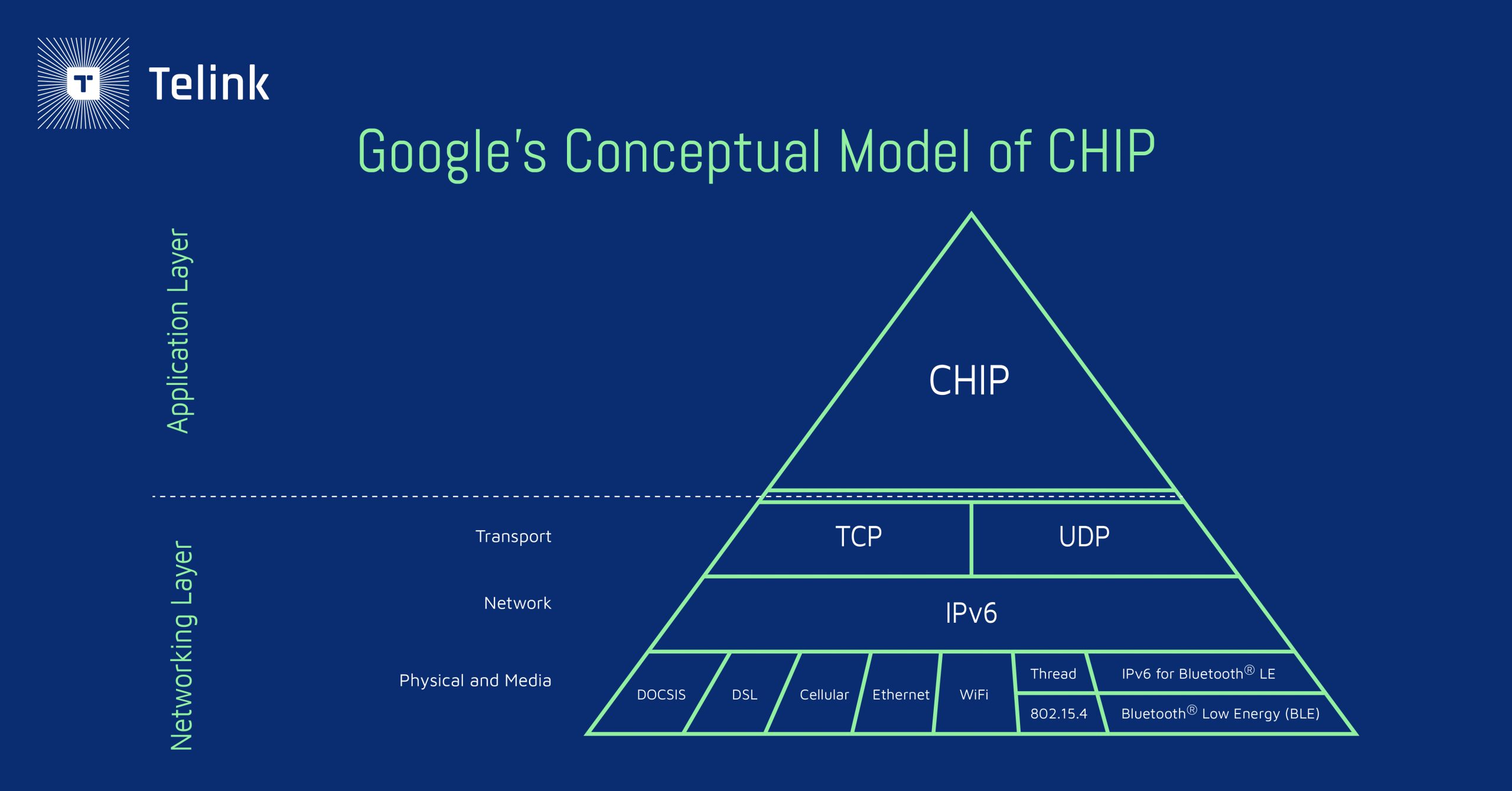



PLEASE ROTATE ME


Telink Staff
March 31, 2021
Standards

An unprecedented collaboration between Amazon, Google, Apple, and the Zigbee Alliance, Project CHIP is striving to solve the problem of smart home device interoperability once and for all.
As recently as three years ago, think pieces bemoaning smart home devices’ lack of interoperability were a staple of the tech media landscape. For instance, a March 2018 article in Fast Company argued, “Tech giants like Amazon, Google, and Apple see the smart home as new territory to conquer through their respective ecosystems…As a result, the more you buy into one system, the more you become locked out of others.”
This ecosystem siloing disincentivizes consumers to invest in smart home devices, but it also complicates the process of producing applications for these devices. “From a developer perspective, it’s kind of a nightmare, because now I don’t have to develop just for one set of APIs, or interfaces, or security protocols. Now I’ve got to do it three, four, or five times for all these different vendors that I know my consumer base is going to use,” explains Open Connectivity Foundation spokesperson Gary Martz.
Even with questions about device interoperability unanswered, the smart home market has enjoyed — and is expected to continue enjoying — remarkable growth. According to one report, the global smart home market has the potential to see an 11.6 percent compound annual growth rate between 2020 and 2025, jumping in value from $78.3 billion to $135.3 billion during that period. In order to guarantee that the smart home market realizes this immense potential, the industry as a whole must take strides to improve device interoperability.
In December 2019, the aforementioned industry giants (Amazon, Google, and Apple) partnered with the Zigbee Alliance to do just that. As Google Nest VP of Engineering Nik Sathe and Google Nest Principal Engineer Grant Erickson announced on Google’s blog, “We’re joining Amazon, Apple, and others to create Connected Home over IP [CHIP], a new independent Working Group managed by the Zigbee Alliance (separate from the existing Zigbee 3.0/Pro protocol). Our goal is to bring together market-tested technologies to develop a new, open smart home connectivity standard based on Internet Protocol (IP).”
Many of the devices consumers are accustomed to using on a daily basis — smartphones, tablets, computers, and so forth — are connected via the Internet Protocol suite. These communications protocols — which include the familiar HTTPS and HTTP at the application layer, TCP and UDP at the transport layer, IPv6 at the internet layer, and Ethernet and WiFi at the link layer (among many others) — enable devices to switch between, for instance, a WiFi network and a cellular network without losing connectivity or application functionality.

By building on top of the IP protocol, the Project CHIP Working Group will bring this level of plug-and-play connectivity to smart home devices. The CHIP standard will utilize TCP and UDP at the transport layer and IPv6 at the internet layer, and will initially define three networking technologies at the link layer: WiFi, Thread, and Bluetooth Low Energy. The first two will be used for operational communications — that is, the transportation of data across networks — and Bluetooth LE will be used for device commissioning.
Critically, Project CHIP will also define an application layer that includes everything from a data model and an interaction model to security features and message framing and routing standards. The application layer will draw on proven technologies from the Amazon Alexa, Google Weave, and Apple HomeKit smart home ecosystems. This represents a major step toward eliminating the kind of vendor lock-in that the Fast Company article (and many others) highlighted. A vendor-agnostic application layer like the one Project CHIP promises to deliver will let consumers use the digital assistant of their choosing — Amazon’s Alexa, Google Assistant, or Apple’s Siri — to command smart home devices from any (participating) manufacturer.
In short, Project CHIP is designed to eliminate two of the most significant obstacles to smart home device interoperability. One, it will enable all a consumer’s devices to connect to the same home network. Two, it will introduce an open source, IP-based connectivity standard that makes it easy for all the devices connected to a consumer’s home network to actually communicate with each other. In other words, it lays the groundwork for smart home ecosystems that are organized around a unified networking protocol and connectivity standard, not around individual vendors’ proprietary technology.
It is important to note that CHIP is not intended to offer yet another new alternative standard to the already oversaturated networking protocol and connectivity standard landscape, but rather to improve upon the standards with which consumers and device developers are already familiar. In fact, the Project CHIP website explains that “the first specification release of the planned [CHIP] protocol will complement existing technologies such as WiFi, Thread, [and] [Bluetooth] LE, and Working Group members encourage device manufacturers to continue innovating using technologies available today.”
If all goes according to plan, manufacturers will be able to start incorporating CHIP into their devices within a matter of months. The Working Group distributed a draft of the CHIP standard to members of the Zigbee Alliance at the end of 2020, and is aiming to finalize the standard later this year. It also created a GitHub repository to help developers familiarize themselves with how to apply CHIP to the Working Group’s initial batch of target device types: lighting and electrical systems, HVAC controls, access controls, safety and security systems, window coverings/shades, televisions, and access points and bridges.
At Telink, we share Project CHIP’s drive to make smart home devices more powerful and easier to use — this is part and parcel of our promise to build chips for a smarter IoT. For our latest product line, the TLSR9 Series, we provide Zigbee, HomeKit over Bluetooth LE, and OpenThread SDKs, ensuring our customers are able to easily develop smart devices that are compatible with the link layers at the heart of CHIP.
As the Fast Company article opined, “Smart home devices should be interoperable…[This] might be a big undertaking, and would go against years of tradition, but in the long run, it’ll be worthwhile for everyone.” Just as Project CHIP is doing their part to make this a reality, Telink is doing ours.
Visit our wiki to learn more about all our development tools, or ask us a question through our Technical Forum or by contacting us directly today.